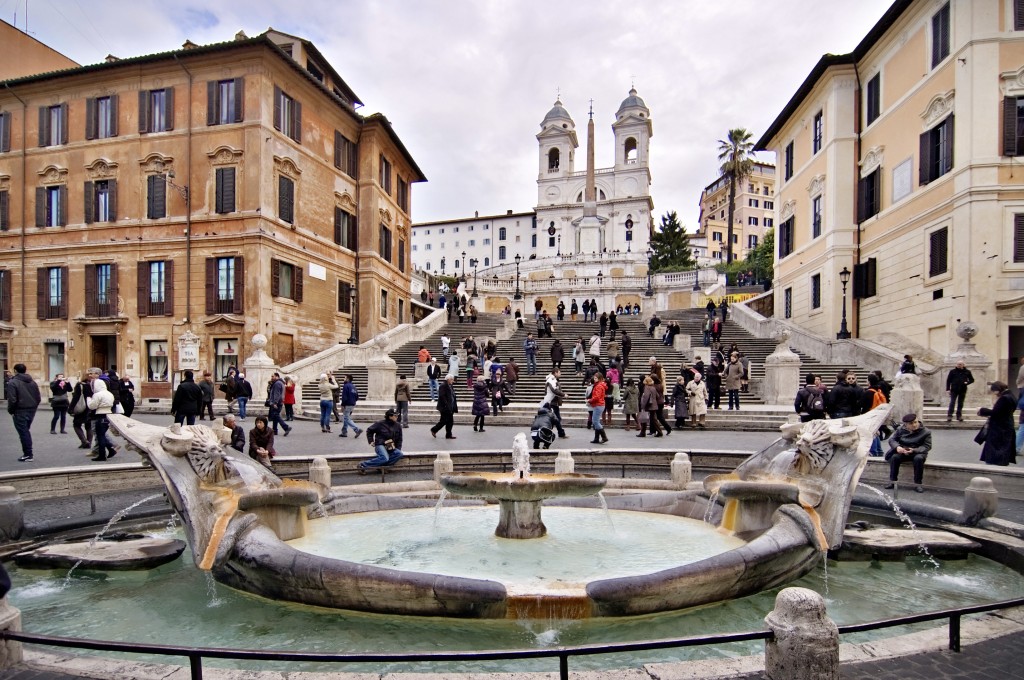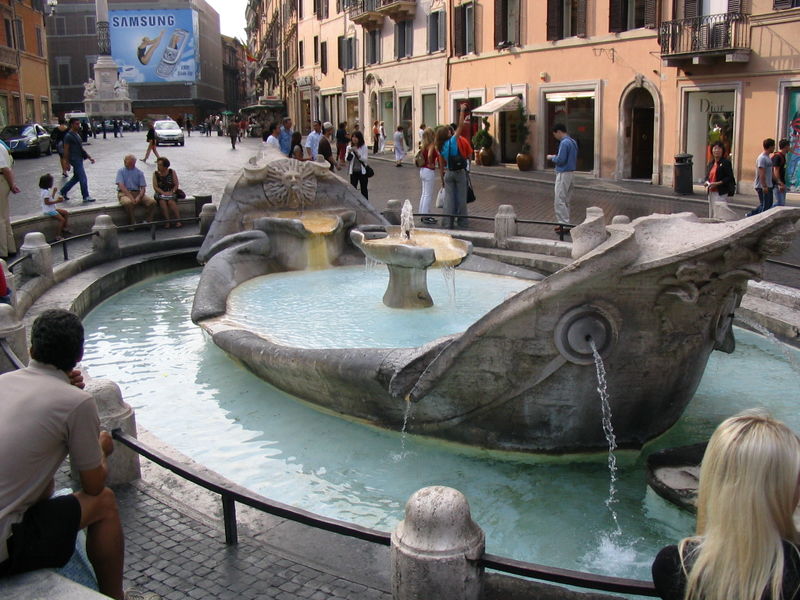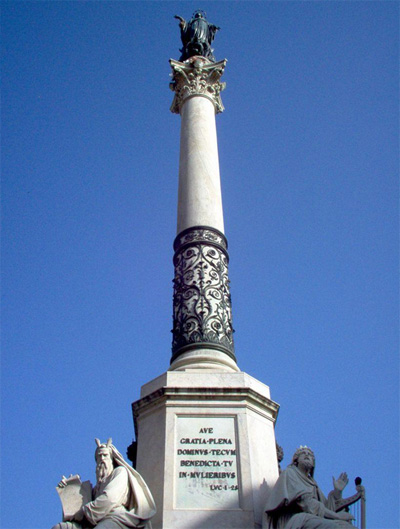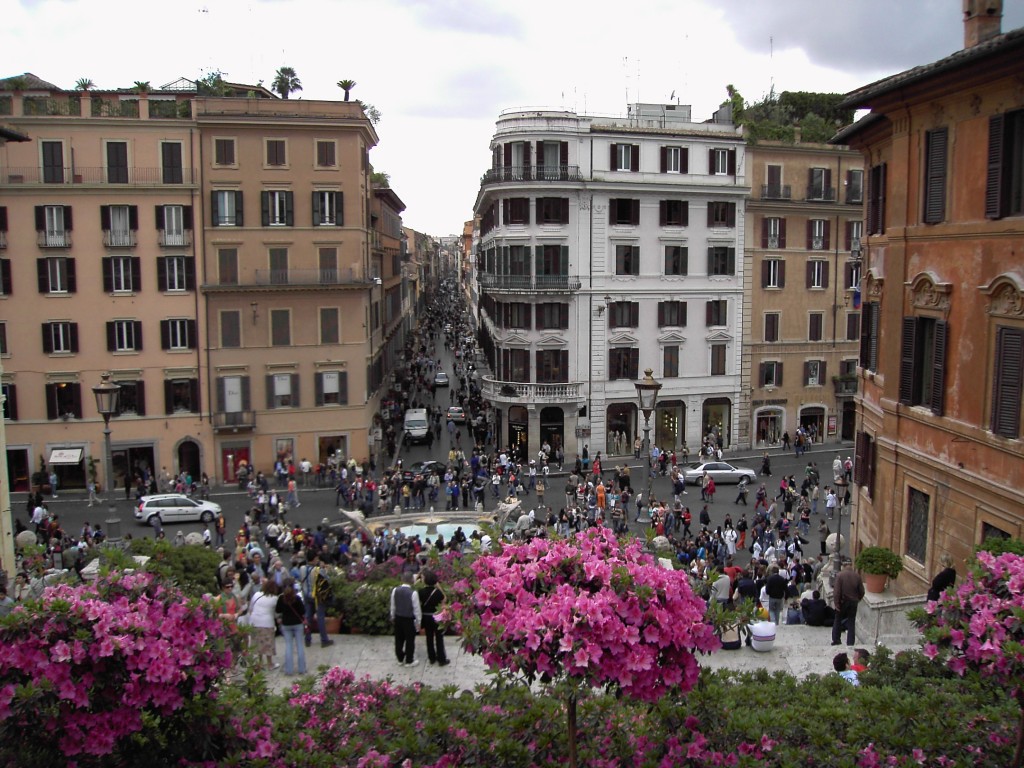
Introduction
The Spanish Steps, or Scalinata di Spagna, was designed and created by Francesco De Sanctis in 1723 upon the request of Pope Innocent XII, and with the help of funding from the French diplomat Stefano Gueffierwas. It is located in Rome’s upmarket area and takes its name from the Spanish Embassy to the Holy See that also has its offices nearby. The steps were commissioned to connect the 15th century church of two-towered Trinità dei Monti at the top, and the beautiful Piazza di Spagna at the bottom.
Consisting of 138 steps, the way up to the church is a mix of straight and curved flights of stairs, interspersed with terraces and vistas upon which one can get a sweeping view of the Piazza below. Its grand, sweeping architecture not only managed to fulfill the task of connecting the piazza to the church, but it has also, over the years, become a tourist favorite and a popular meeting spot.
In fact, since the 18th century, people have been flocking to the steps because it has become a meeting place for artists possibly looking for a muse, and models looking for artists to immortalize them in art, all with the lovely Spanish Steps providing the backdrop. These days, the Steps remain a popular meeting point, and it also continues to provide a perfect perch for people-watching.
What to See

Fontana della Barcaccia
At the bottom of the Spanish Steps, in the Piazza, is the famous and often-photographed Fontana della Barcaccia, or Fountain of the Old Boat. It is named as such because of its shape which is that of a half-sunken ship with water overflowing its bows. According to legend, the Tiber River would flood back before the city walls were built, and in 1598, a particularly bad flood reached all the way to the square. When the waters receded, a barge was left in the middle of the square where the fountain now stands. The fountain was commissioned by Pope Urban VIII, and its creation and design is attributed to Gian Lorenzo Bernini.
Trinità dei Monti
The Trinità dei Monti is a beautiful French Gothic church located on a top of a hill that overlooks the piazza and its fountain. Its twin bell towers dominate the vicinity’s skyline and the church is a well-known landmark in Rome. It used to only be a small chapel until 1495 when King Louis XII commissioned a new church to replace it. Construction took a long time,  and it was finally consecrated by Pope Sixtus V in 1585. It houses several paintings, including frescoes by Daniele da Volterra who was a pupil of Michelangelo.
and it was finally consecrated by Pope Sixtus V in 1585. It houses several paintings, including frescoes by Daniele da Volterra who was a pupil of Michelangelo.
Colonna dell’Immacolata
The Colonna dell’Immacolata, or Column of the Immaculate Conception, is located in the southeast part of the square. The obelisk itself was discovered in 1777 underneath a monastery in the Gardens of Sallust, and was subsequently erected in its current spot in 1857 under Pope Pius IX’s request, in order to celebrate declaration of the Immaculate Conception. In later years, a statue of the Virgin Mary was added to the top of the column. The hieroglyphs which adorn its surface are a copy of those found on the obelisk on the Piazza del Popolo which can also be found within Rome.
John Keats House and Museum
To the right at the base of the steps is a house where the famous English poet John Keats lived and died. It has since been converted into a museum dedicated to him, and it is full of memorabilia celebrating his life and the English Romantic period.
Babington’s Tea Rooms
On the opposite side of the Steps from the John Keats Museum would be Babington’s Tea Rooms which has been serving English tea in coffee-loving Italy for over a hundred years, back in a time when tea was only sold at pharmacies. It was established in 1893 by the two English  residents Isabel Cargill and Anna Maria Babington. These days, the Tea Rooms has become an institution and a must-see stop for tea-loving visitors. It has an elegant interior where waiters in traditional English attire serve the patrons. On top of being a tea room, Babington’s now also has restaurant facilities, and sells tea-related souvenirs, pastries, condiments, as well as their own blended teas.
residents Isabel Cargill and Anna Maria Babington. These days, the Tea Rooms has become an institution and a must-see stop for tea-loving visitors. It has an elegant interior where waiters in traditional English attire serve the patrons. On top of being a tea room, Babington’s now also has restaurant facilities, and sells tea-related souvenirs, pastries, condiments, as well as their own blended teas.
Via Dei Condotti
Via dei Condotti , which faces the Spanish Steps, is THE place to go for shopping in this area. It is a street which hosts the largest number of stores for international luxury and high-end brands, as well as Italian Rome-based fashion houses. There are also numerous smaller boutiques and designer shops along this street, as well as many restaurants and bars.
Tips and Advice
- The Spanish Steps is a sight to behold in May as a section of it is filled with pots of blooming azaleas, while in the Christmas season a nativity scene is staged on the first terrace of the staircase. Meanwhile, be warned that in the summer, the Steps can get pretty crowded, with tourists just sitting around, chatting, and lounging on the steps, resting their feet from all the touring and shopping.
- It may seem tempting to start a picnic there, but be aware that given the sheer number of people who visit the Steps, eating on it has been banned by Italian authorities in an effort to keep the vicinity clean.
- If you want to explore a bit more, the Villa Medici can be reached from the top of the Steps via a ramp that goes up the Pinchian Hill.








